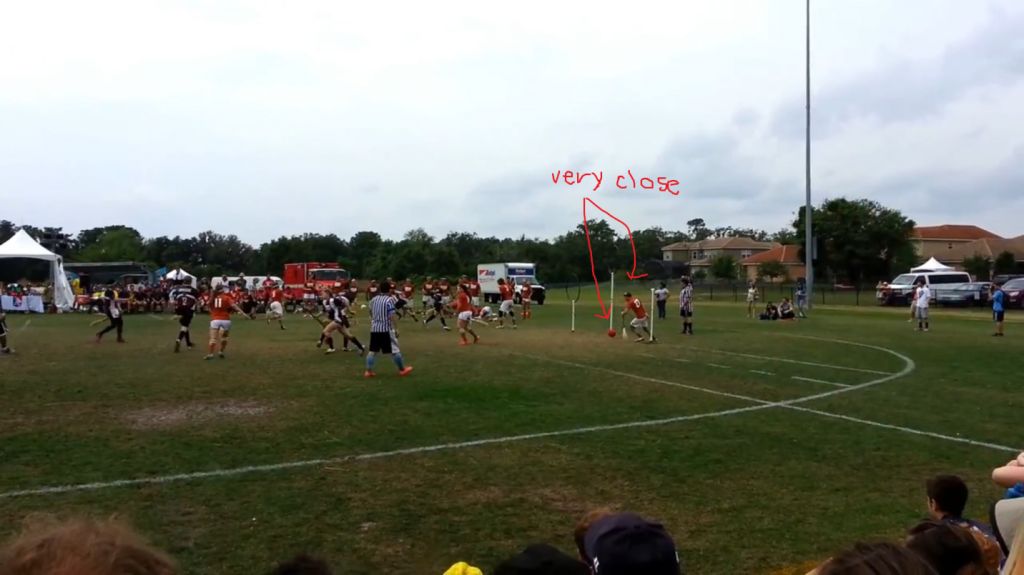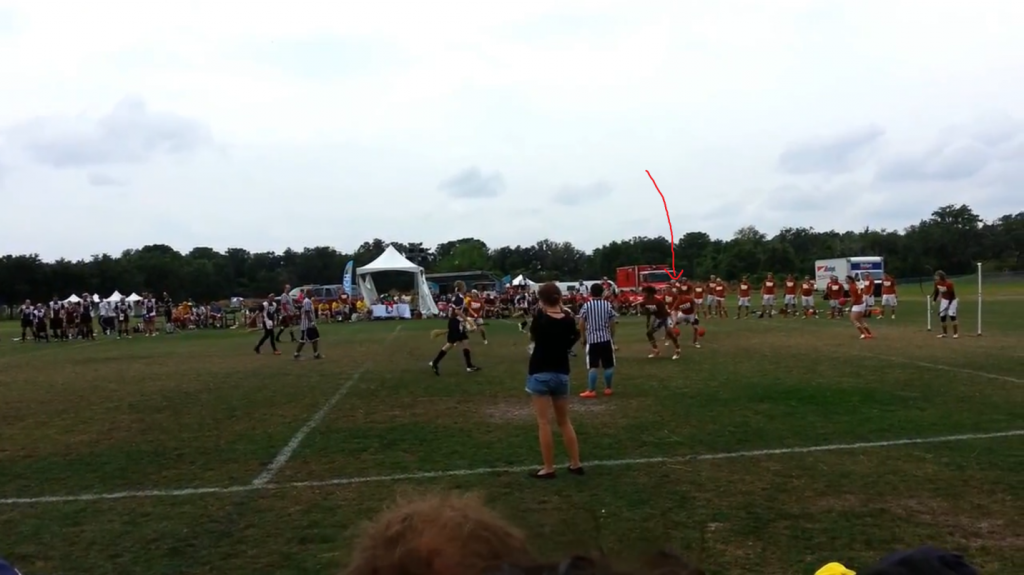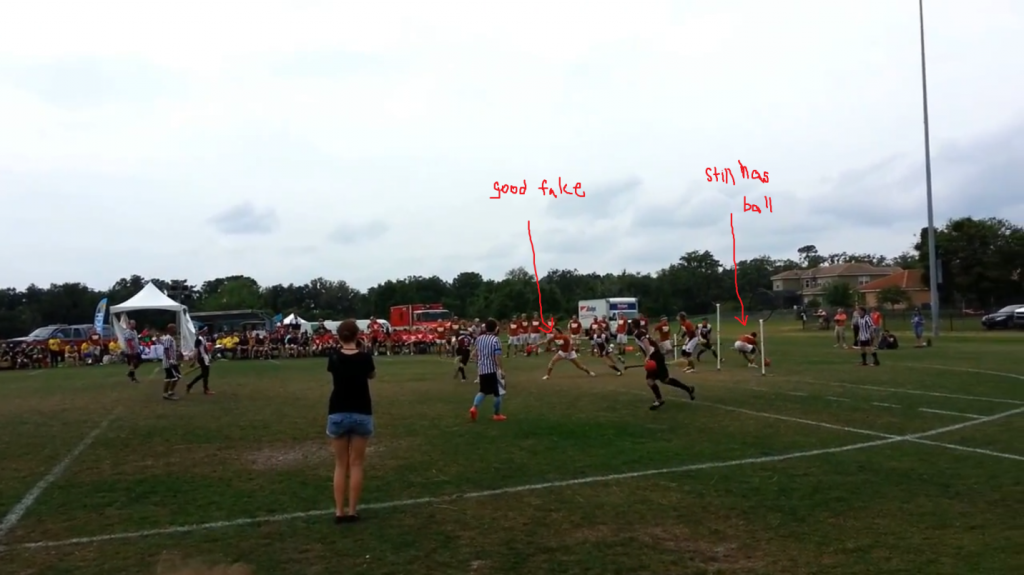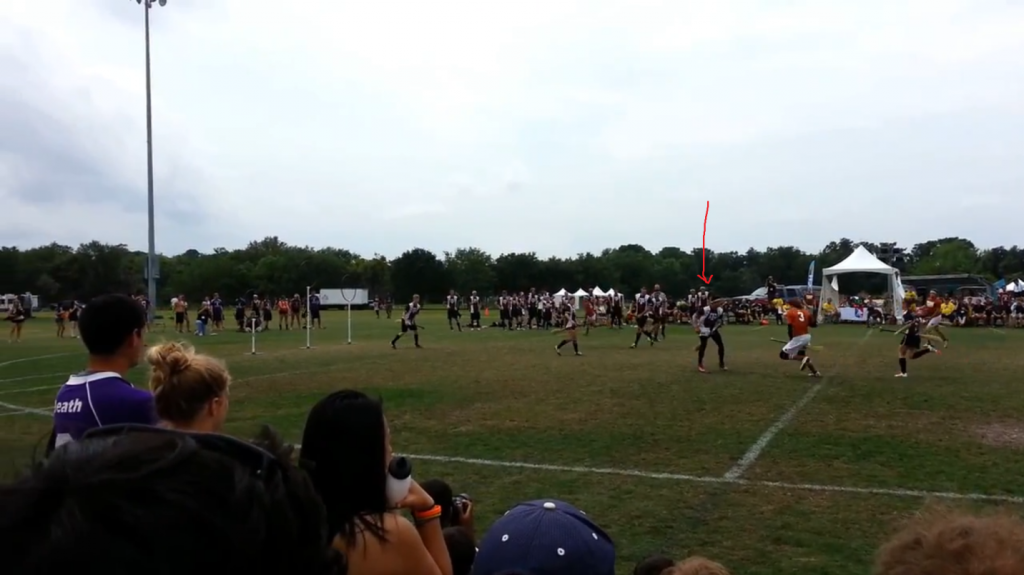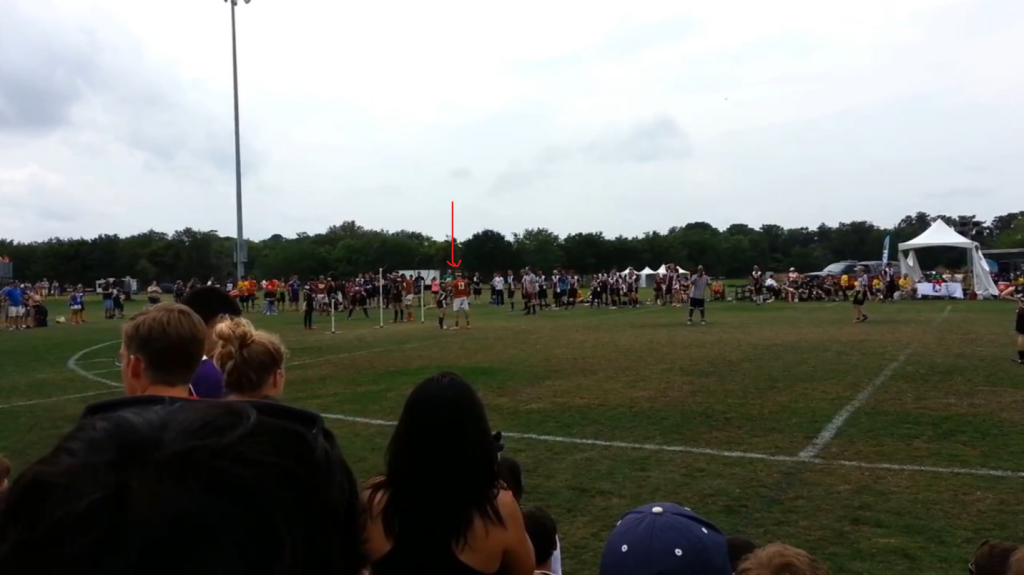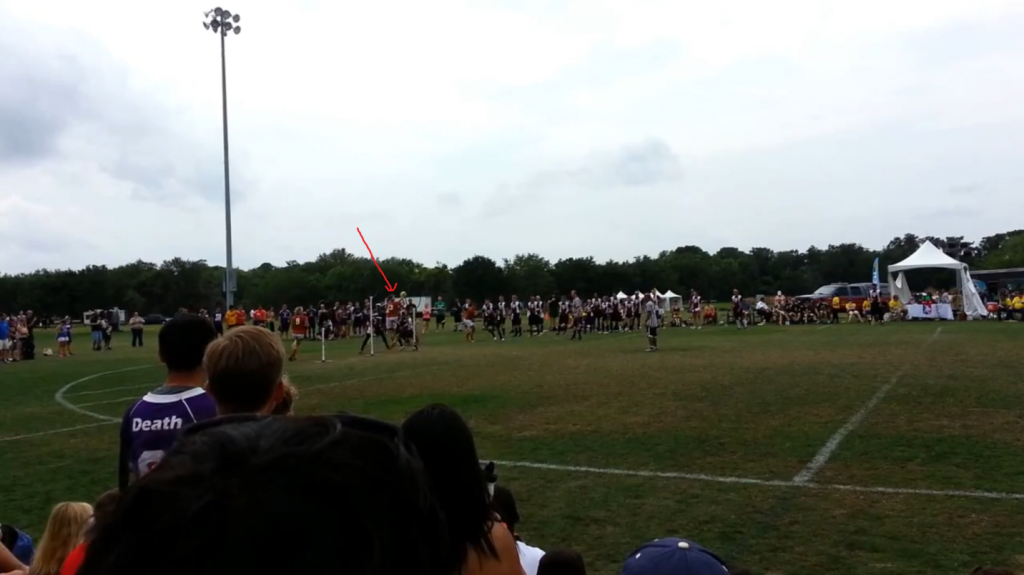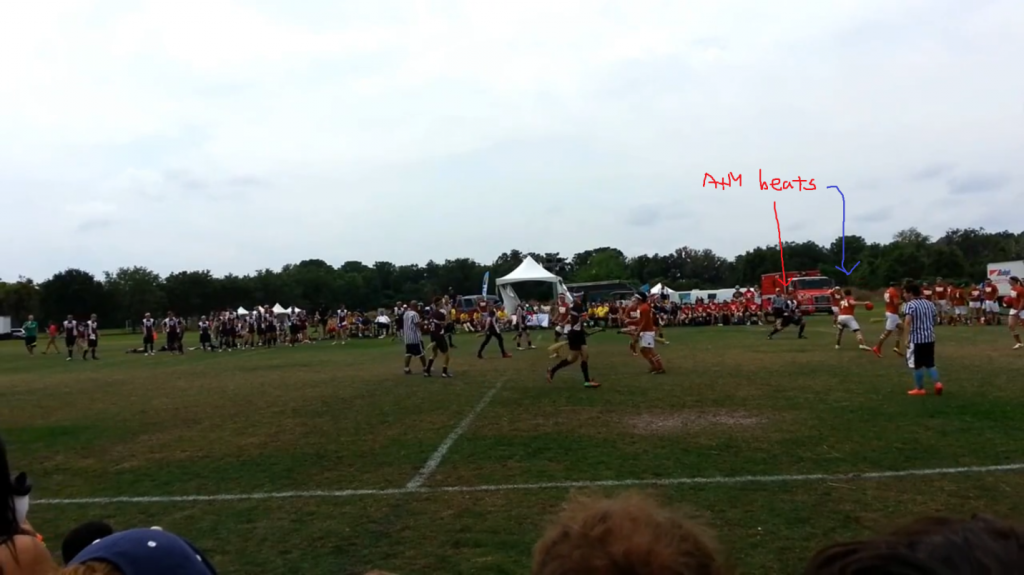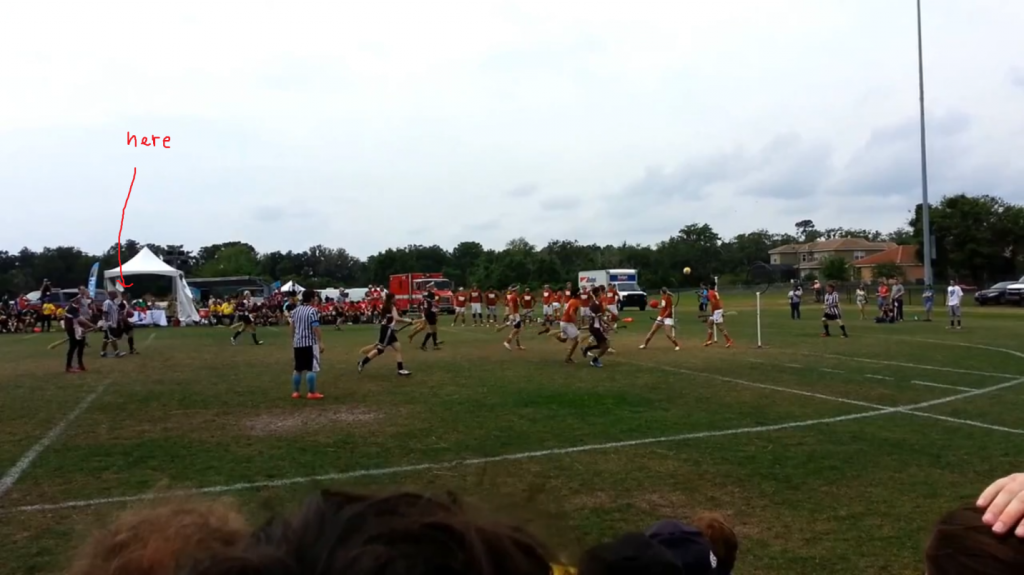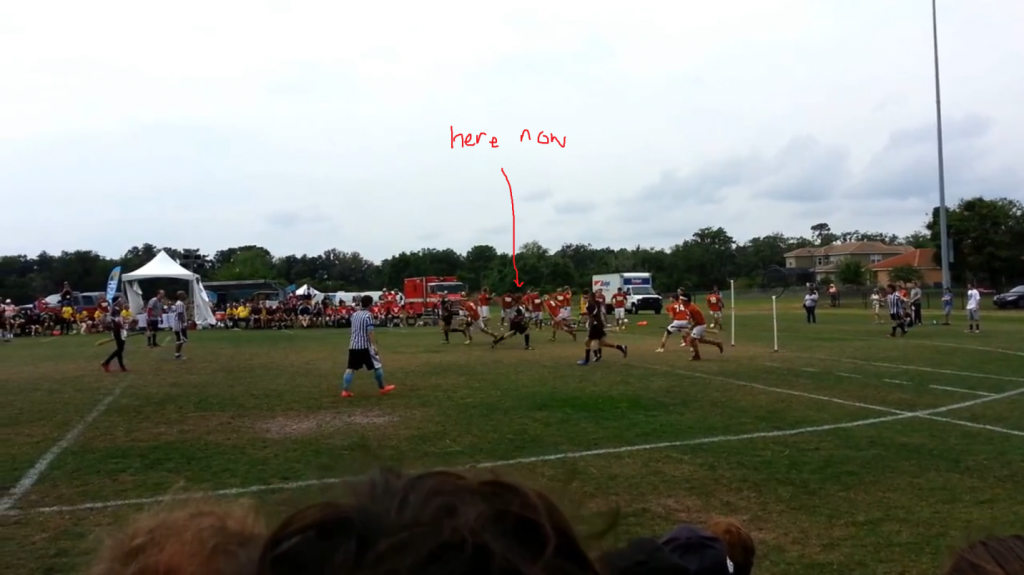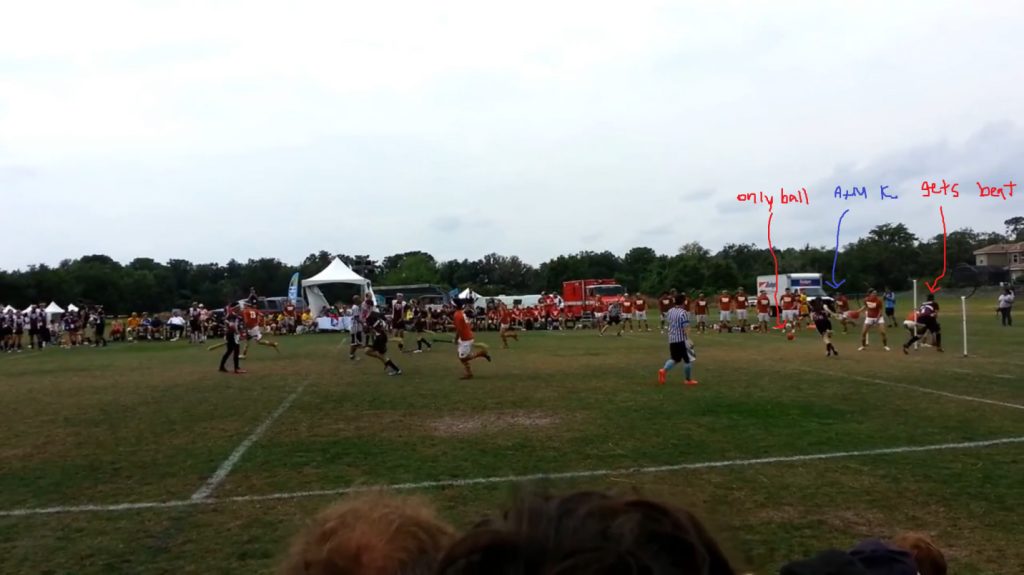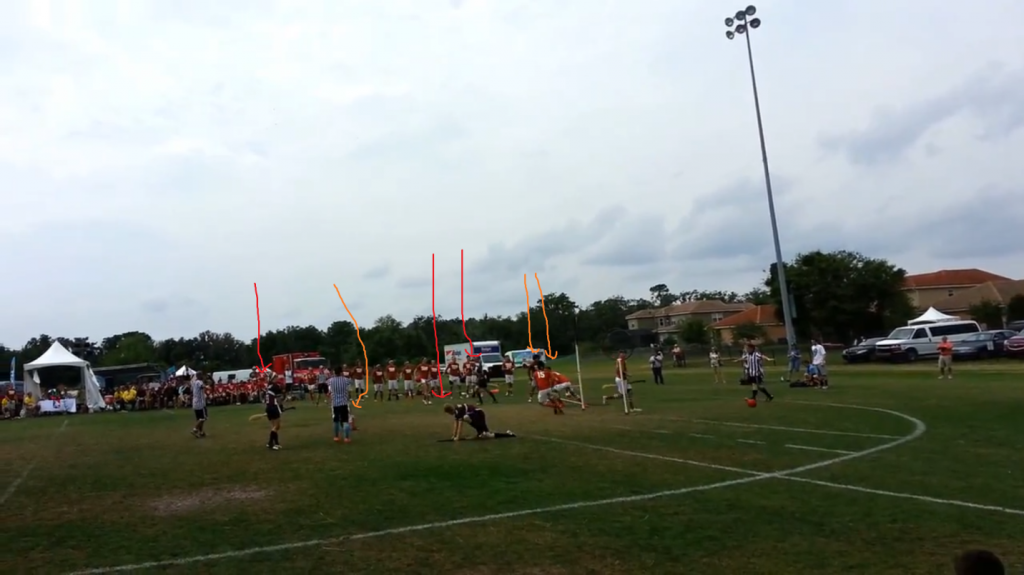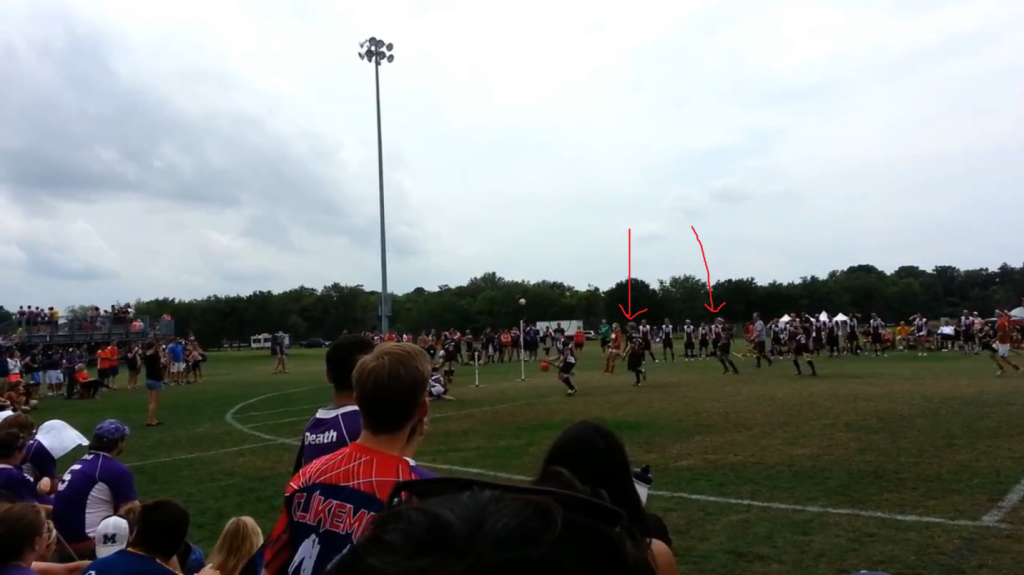- Rule, Britannia, no more?
- Unpopular Opinions: US Quadball Cup 2023
- Proven Contenders: University of Virginia
- Proven Contenders: Rutgers University
- Proven Contenders: University of Michigan
- Proven Contenders: Creighton University
- Different Perspectives: A Look Inside USA Ultimate
- Antwerp QC, Much of Belgian Core, Leaves Competitive Quidditch
Lonestar State Showdown: A Video Analysis
- Updated: June 3, 2013


The University of Texas, who entered No. 2 in the Eighth Man’s rankings, proved itself to be utterly dominant at World Cup VI, winning its nine games by an average of 126 points, with the closest game being a 190*-80 victory over UCLA in the finals.
Texas A&M, meanwhile, has been the undisputed No. 1 team in the Eighth Man’s media rankings since November, and entered the quarterfinals 20-1 on the season in official matches. They seemed as close to a machine as the sport had, always getting the result through talented play and attrition
While the game between arguably the nation’s top two teams seemed primed to be a spectacle, the final result ended up being anything but. Texas came in and crushed A&M 200* – 40, leading some like me to wonder what they did so right, and what it can tell us about strategy at the highest level in the future.
Beater Play
An overlooked component of Texas’ team was its beaters – the Longhorns’ beaters thoroughly outplayed their opponents in every bracket game at World Cup VI. Although they might not have been as much a threat as other teams’ beaters, the Texas beaters played within their game plan, and executed beautifully. In this game, A&M’s beaters had control for a mere 2:26 out of the approximately 21:30 of game time – or just about about 12% of the game.
Bludger control was so important in this game not only for defensive reasons, but also for offensive ones. As both teams kept bludgers back on their side on offense, having bludger control meant playing defense with 2 bludgers, and attacking a defense with only one. As a result, Texas scored on 42.1 % of possessions with bludger control, and 20 % of those without.
Although both Texas and A&M keep bludgers back when possessing both bludgers on offense, they have varying strategies when only holding one bludger and on offense. Texas likes to send only its beater, usually its quicker and more physical one, without the bludger in hopes of either retaining a bludger deflected off a Texas chaser or physically obtaining one through force. In contrast, A&M tries to bring both beaters up to regain bludger control. This creates tremendous pressure on a defense, although it could be risky and potentially backfire (more on this later). What was most impressive (to me anyways) about Texas’ defense was that it could withstand this pressure and still defend superbly.
Here’s an early possession where A&M brings up both beaters, hoping to put some pressure on the Longhorns’ beaters and creating a scoring opportunity:
Here, Texas’ Jacob Adlis (male UT beater in front) makes a play with his body, not his ball. He first fades deeper into the defense, and then steps up, dodging the throw by the A&M beater. With the Aggies’ beater now off the pitch to regain the bludger, the A&M chasers should probably pull back and wait for their beaters to avoid an easy fast break on a defensive stop. Instead, the Aggies still attack, and ultimately fail due to a great beat by Adlis.
Here’s the video of the whole play:
Here’s another great example of how maintained Texas bludger control:
Here, the Mathieu Gregorie (blue arrow) beats Adlis (red arrow). Seeing the beat coming, Adlis throws his bludger at the female A&M beater (purple arrow) right before getting beat. It ricochets off her right back to the Longhorns’ hoops. This is very important, as Adlis has a bludger at feet when he goes back to his hoop.
Hope Machala, UT’s female beater (yellow arrow) beats Gregorie (blue), and now A&M is bludgerless, but with both Texas beaters having thrown their bludgers, this is something of a small victory for the A&M beaters, as it gives a small window of opportunity for the A&M chasers to attack a bludgerless defense.
However, while this is all happening, the Longhorns’ chasers do a good job of making sure that the Aggies, who have a short window of bludgerless defense, don’t take advantage of those precious few seconds. By the time a pass is made to an open chaser, the Texas’ beaters are all over her. The inability to consistently take advantage of these few moments of vulnerability by the vaunted UT defense hurt A&M all game long.
Here’s the full play:
A third and final example:
Here, Colin Capello of Texas beater is beat, failing to catch the bludger thrown at him.
Instead of getting flustered, Lauren Carter doesn’t miss a beat. She rolls her ball back at the hoop for her fellow beater, picks up the ball he dropped, and fakes a throw at an A&M chaser which forces a shot that is easily blocked by the keeper. The play truly shows the excellent overall strategy within the Longhorn’s beater corp.
Strategy / Execution
As seen above, Texas’s chasers do a great job of giving their beaters time to recover. This is a strategy that works because it takes advantage of Longhorns’ ability to be physical on defense. All in all, Texas does a good job of maximizing its strengths, giving its beaters the chance to control the bludgers in the way they do.
Texas Offense vs. Texas A&M Defense
In addition to the physical superiority that Texas holds in most matchups, the Longhorns play a very smart game. On offense, well-timed runs often lead to alley-oops or touch shots.
The A&M defense was mostly a one-bludger defense. They have an on-quaffle defender with the beater behind. Although it looked much worse, the A&M defense did a decent job when there was a beater set, allowing UT to score eight out of the 19 times (42.1%). However, there were some breakdowns that led to easy Texas goals.
Often, the point defender (red arrow) was beat too easily. This created tremendous pressure on the rest of the defense, because now they’re essentially playing four-on-three, leaving at least one player, if not two, open.
Another problem was the A&M beater often getting out of position, failing to cut off the angles properly and stay between the ball-carrier and the hoops.
In this play, instead of running to get into position, the beater threw a long-distance beat that is fairly accurate. But the problem with it is that the power behind the throw caused it to deflect a great distance. This made sure that the A&M beater beat only one player per possession, which created problems for the A&M defense. In this case, the bludger goes all the way to the A&M bench, giving the Texas chaser ample time to hit an admittedly impressive shot.
Rinse, lather, and repeat:
Texas’ Cutting Offense
Another great way that UT scores is by making solid cuts to get open for pass. Here is a good example:
Here, Chris Morris (red )cuts right in front of the chaser guarding him and gets an easy score.
Here’s another example, which is impressive because it occurs even though A&M has both bludgers.
Another great pass-and-shoot here:
The alley-oop is a great way to score, as there isn’t anything that anyone can do about it when executed precisely, even when holding bludger control. While Texas makes it look easy, it isn’t an easy shot, and it requires coordination and teamwork between thepasser and scorer.
The Real Problem
When A&M was capable of getting set on defense with a beater, Texas scored nine out of 24 times, a 36% scoring percentage, with most of the successful attempts coming in transition. However, the real problem that the Aggies had was that it allowed the Longhorns eight chances to score on hoops that had no beaters whatsoever. Texas scored on six out of these eight chances, for a whopping rate of 75%.
Texas A&M Offense vs. Texas Defense
As shown before, the Longhorns’ defense was outstanding, holding A&M to a 4-for-25 scoring percentage (16%) with two beaters back on defense, and an amazing 0-for-6 when only having one beater back on defense. Perhaps the more impressive feat was never allowing Texas A&M a chance to attack a bludgerless defense, which is still impressive despite the fact that Texas never brings a beater with the ball past half court.
As mentioned above, when bringing beaters up on offense, you want to distract the other team’s beaters, and give your team a better chance to score. The risk is that there could be situations that leave your goal bludgerless and thus, extremely vulnerable. It’s difficult to execute this against good teams, because it requires precise judgment as well as strong communication between the chasers and beaters on offense.
The main thing you are looking to achieve is bludger control. Scoring points is a secondary goal, with doing both the best scenario. Doing neither can lead to easy transition scores that put you in a hole quickly. To avoid this, a team needs to make sure that beater action happens before the chaser with the quaffle goes in, and, if the offense attacks, and the chances of losing quaffle possession are high, pull back.
In this game, the Aggies never successfully gain bludger control in this situation, though they are able to score off of it on multiple occasions.
[Side note: UCLA did a very good job of utilizing this strategy and scoring in this manner in their first few possessions in the finals against UT, which is why they kept up with Texas for the first few minutes of the game without bludger control. However, they couldn’t defend against UT, and just got worn down physically.]
Here’s one good example of how A&M brought up their beaters to score:
The male A&M beater (red) beats Colin Capello (blue), leaving the balls loose. One ball goes behind the hoops, and the other goes to the left. This essentially leaves the Longhorns’ defense with one bludger for a few seconds, which gives Kifer Gregoire a bit of space to make a difficult shot, with another A&M chaser behind ready for the put back had it not gone in.
Even if they didn’t score, A&M got open scoring opportunities when bringing beaters up:
However, there were five or six instances where the Aggies’ beaters left the chasers out to dry, which directly led to a few easy (bludgerless) goals for the Longhorns. This is the worst possible scenario when bringing a bludger up without control. Here’s a good example:
The A&M chaser shot the quaffle, but the shot was blocked by the keeper. Seeing as how no A&M chaser is near the Texas hoops, it should probably make sense for the A&M beater to get back and start playing defense. But instead of doing that, he goes in and beats the Longhorns’ beater:
The beat is successful, but since Capello is right in front of his own hoops, he just drops his bludger and grabs it. Carter (female UT beater) beats the A&M beater (red), and the only ball left for the female A&M beater is quickly rolling towards the Texas bench:
The A&M Keeper has the quaffle, and scores easily enough with a late pass. The key is that he got to do it against a bludgerless defense, due to the a bad decision made by the A&M beater.
Longhorn Hunger
In a fitting tone, the Longhorns played the whole game hard, and it felt as though they were faster, stronger, and despite being up for most of the game, hungrier. There were many instances when A&M players jogged back on defense, letting the Texas players run by them in transition.
Here is a play that epitomizes the hustle of the Longhorns:
The play starts with an A&M miss, and when the Texas chaser picks the quaffle up, the Aggies are well positioned to defend any transition. However, the Longhorns (orange arrows) simply outrun the A&M chasers (red arrows), who jog back.
By the time UT scores, two of A&M’s chasers have just taken their first steps in the keeper zone.
Conclusion
Texas thoroughly outplayed A&M, in almost every facet of the game. However, not all is lost for those looking to upend the Longhorns. Of the 9 goals UT scored in the half-pitch, about four of them could be considered semi-transitional shots – easier shots created by Texas simply outrunning A&M. If A&M had prevented a few more transition shots, the game would have ended up a lot closer. Instead, the Longhorns ran rampant straight





